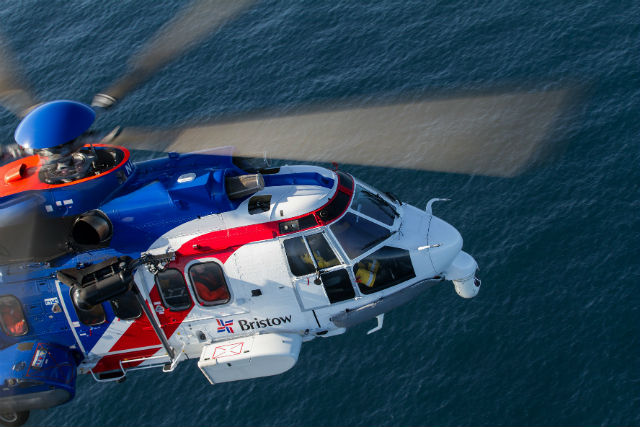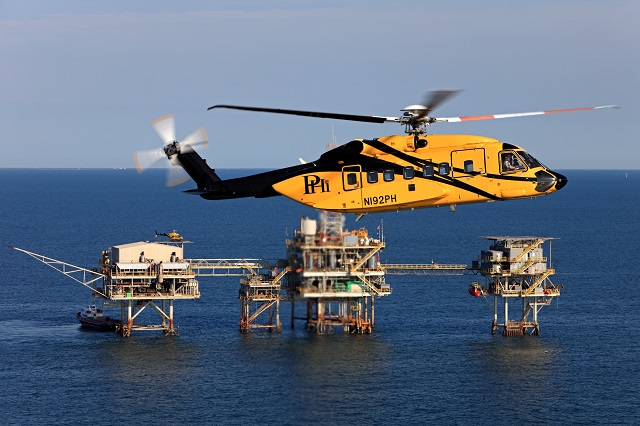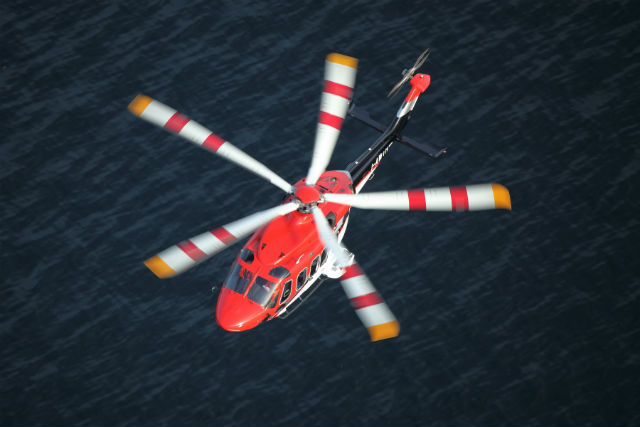Further evidence has emerged of the impact of the downturn in the offshore oil and gas market, with three of the sector’s big helicopter providers reporting sharply reduced quarterly profits over the past few days.
Earlier this year there had been hopes of a sustained recovery in the price of Brent crude, but prices have slid markedly to around $50 per barrel since reaching a high point in early May.
Helicopter service providers, which had previously remained upbeat, are now revising down their forecasts for the year based on the last quarter’s trading.
Take Bristow Group, for example, which operates across in the world’s major oil markets, with a particularly strong presence in the North Sea.
During the three months to 30 June it saw losses of $1.62 million compared with net profits of $45 million for the same quarter a year earlier.
Oil and gas revenues were hardest hit, shrinking by 8% year on year, as producers reined in their spending. And, says chief financial officer John Briscoe, the situation will worsen with segment revenues forecast to fall by 10-15% for the full year.

Airbus Helicopters
What has particularly hurt Bristow has been its inability to shrink its cost base fast enough to cope with the declines in activity.
Jeremy Akel, chief operations officer, told analysts during a 7 August conference call that efficiencies sought by the oil producers through improving the load factor on each flight, changed rotation patterns of the offshore workforce and “more resilient scheduling” are all “driving the overall demand [for flights] downwards”.
“We believe there is a new normal coming,” he says.
Bristow had originally planned for a 12-24-month downturn, but is now revising this to 36 months with no recovery anticipated before the back end of 2017.
As a result, it is accelerating cost savings across the business. It had already committed to taking $95 million out of the operation in its 2016 fiscal year – including reducing its workforce by 10% – but will look for additional economies of $60m over the next 12 months, which will encompass “further headcount reductions”, Akel says.
It is already in consultation with staff across three Scottish bases to cut a total of 130 positions, including 66 pilot jobs.
The pain is being most keenly felt in Europe, as chief executive Jonathan Baliff points out: “The downturn has been felt on a global scale, but our North Sea operations have been particularly impacted in recent months.”
Bristow’s figures show that operating profit for its Europe Caspian business unit – which includes the North Sea region – slipped by almost $28 million in the quarter to $14.1 million, on revenue which fell by nearly $7 million to £223 million.
Although it saw profits reduced across all its business units, none of the others experienced such a steep decline.

Sikorsky
But the financial pain felt by operators is not confined to the North Sea. In its quarterly results for the period to 30 June, Lafayette, Louisiana-headquartered PHI, which principally serves oil producers in the Gulf of Mexico, reported oil and gas revenues sharply down to $113 million, from $128 million a year earlier. Net profit in the segment also fell to $11.3 million from $23.1 million a year earlier, it says, as flight hours declined in the quarter from 25,743 from 30,675.
But not every operator is feeling quite so negative. Despite seeing underlying revenue and profit slipping in the quarter to 30 June on “lower utilisation” of its medium helicopters, Era Group, another US-based firm, is staying upbeat.
“To paraphrase Mark Twain, reports on the death of the Gulf of Mexico offshore market have been greatly exaggerated, at least as it relates to helicopter services,” says Chris Bradshaw, the company’s chief executive and chief financial officer – describing the Gulf of Mexico as “one of the best, if not the best offshore helicopter markets in the world”.
Era has also recently secured a 75% interest in Bogota, Colombia-headquartered Sicher Helicopters, giving it access to what Bradshaw calls “Latin America’s fourth largest oil-producing country, with a burgeoning offshore market still in its infancy”.

AgustaWestland
The downturn is, in turn, also having an impact on the near-term orders for new helicopters. It is by no means a comprehensive picture, and too small-scale to be described as a trend, but evidence from the quarterly filings suggests that the operators are reducing capacity growth, particularly at the heavier end of the market.
For example, PHI will take delivery of two heavy helicopters– almost certainly Sikorsky S-92s – this year, dating from a 2014 commitment for six examples. However, just last month it axed the remainder of the order.
And Era Group has trimmed its overall requirement for AgustaWestland AW189s from 10 helicopters to nine.
Bristow’s fleet plan for the year remains broadly unchanged, but has allowed six options – for four medium-class helicopters and two heavies – to expire.
However, chief executive Johnathan Baliff insists that despite the depressed market, its order for 17 Airbus Helicopters H175s, placed in March this year, makes sense – not least because it included an airline-style uptime agreement offering significant “risk reduction”.
The new class of super-medium helicopters, including the H175, allows it to offer clients “aircraft that are right-sized” to “maximise load factors”, says Akel.
Source: FlightGlobal.com























